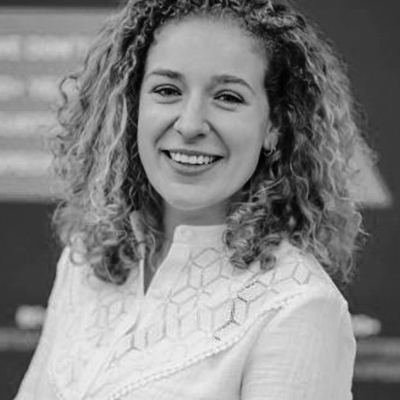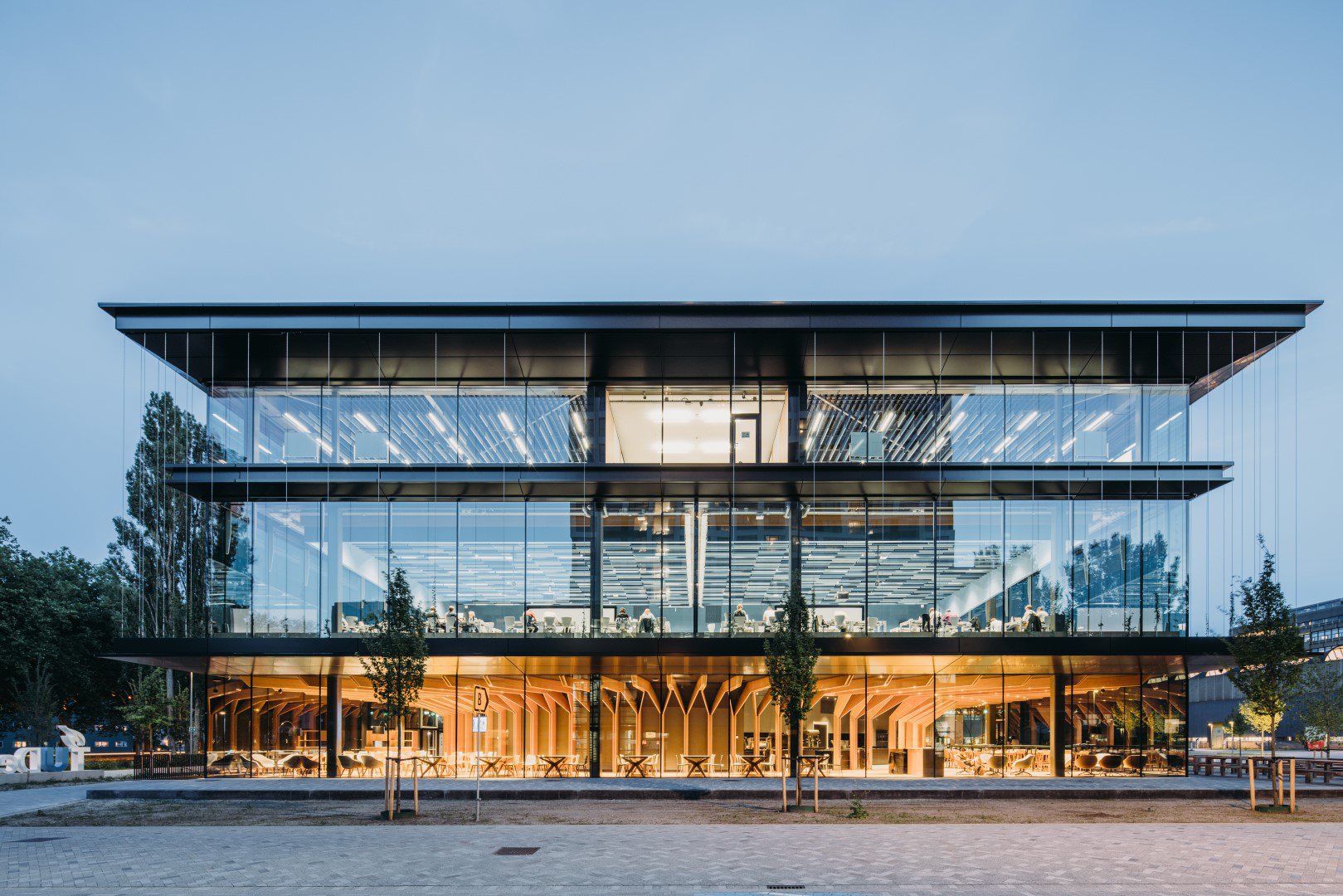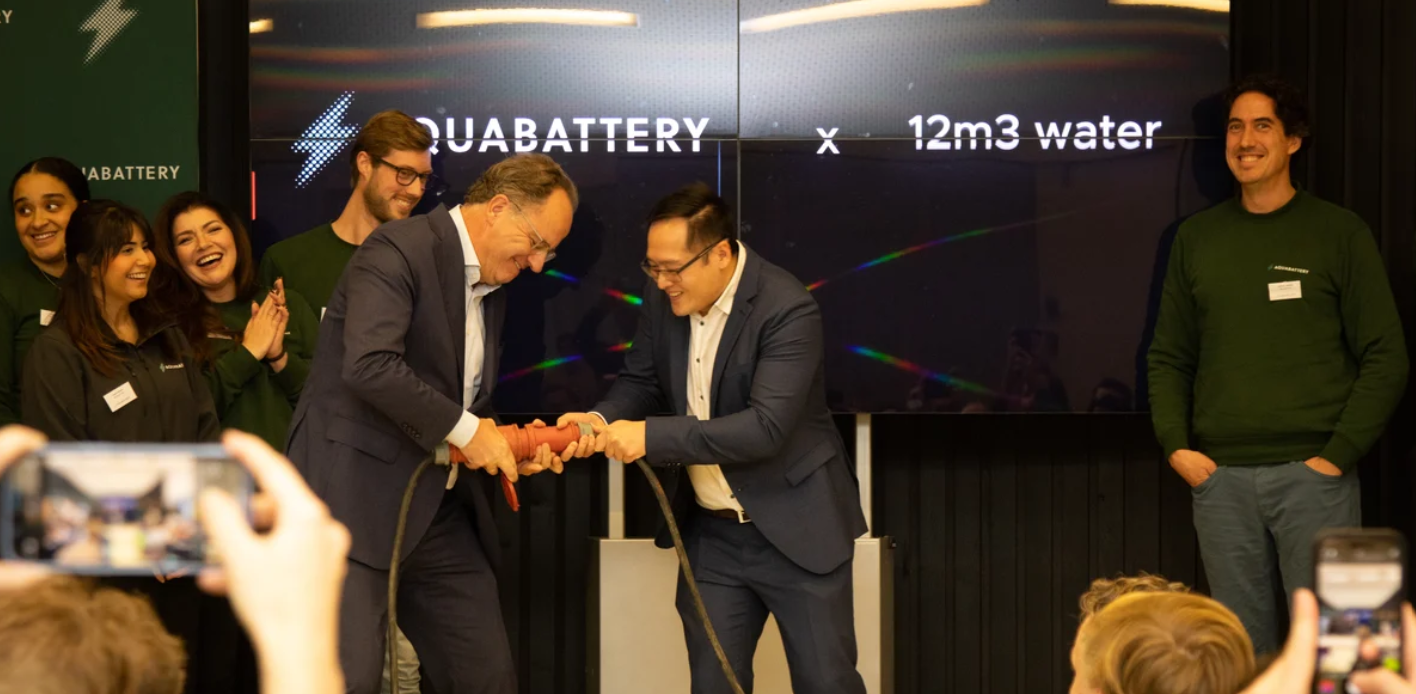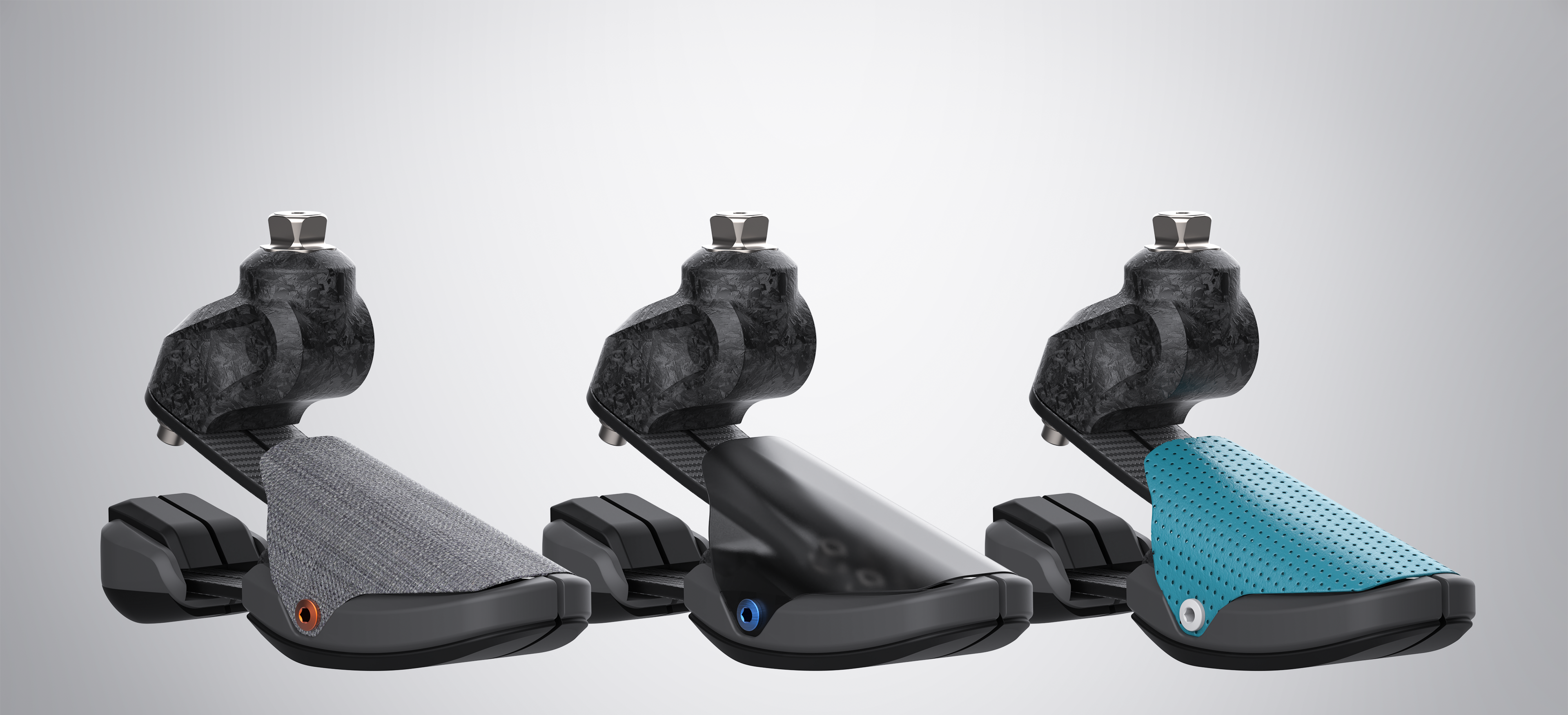Concrete: we live in it, drive over it and use 30 billion tonnes of it every year. Concrete accounts for half of all the world’s construction materials. But its production and use produces a huge CO2 footprint. This is why innovative solutions are being developed in Delft in the form of self-healing concrete, circular concrete recycling and moss-covered concrete designed to cool cities down. But innovations alone will not solve everything, warns Henk Jonkers, Professor of Bio-adapted and Sustainable Building Materials.
City centres as green oases where concrete walls and façades clad with moss keep temperatures low while also capturing fine particulates. Self-healing concrete that automatically fills in cracks in concrete, preventing dangerous situations and leaks in tunnels and bridges. In new-build projects, locally recycled concrete is being used, meaning that there is no need for the production and transportation of new materials after existing buildings and structures have been demolished. This is just a selection of the Delft innovations currently being tested in the real world: on the Afsluitdijk, in water treatment in Zeeland and at The Green Village field lab on the TU Delft Campus.
So how does a marine biologist from Groningen end up in the world of innovative concrete in Delft? Jonkers reacts to the question with a laugh. “It doesn’t immediately strike you as a logical choice, does it? At the Max Planck Institute in Bremen, I was conducting research into bacteria that secrete limestone. That’s how Professor Erik Schlangen, Professor of Experimental Micro-mechanics at TU Delft, tracked me down.”
Schlangen was inspired by Spanish researchers who use a type of mortar with bacteria in it to form new limestone as a method for repairing cracks in statues and monuments. Intrigued by the idea, Jonkers moved from Bremen to TU Delft’s Faculty of Civil Engineering and Geosciences (CEG). Years of research, experimentation and tests ensued, ultimately resulting in the successful pouring of concrete with bacteria mixed into it, which are ‘woken’ when water penetrates the concrete from outside. These bacteria then produce limestone that fills in the cracks – leaving the concrete waterproof again.
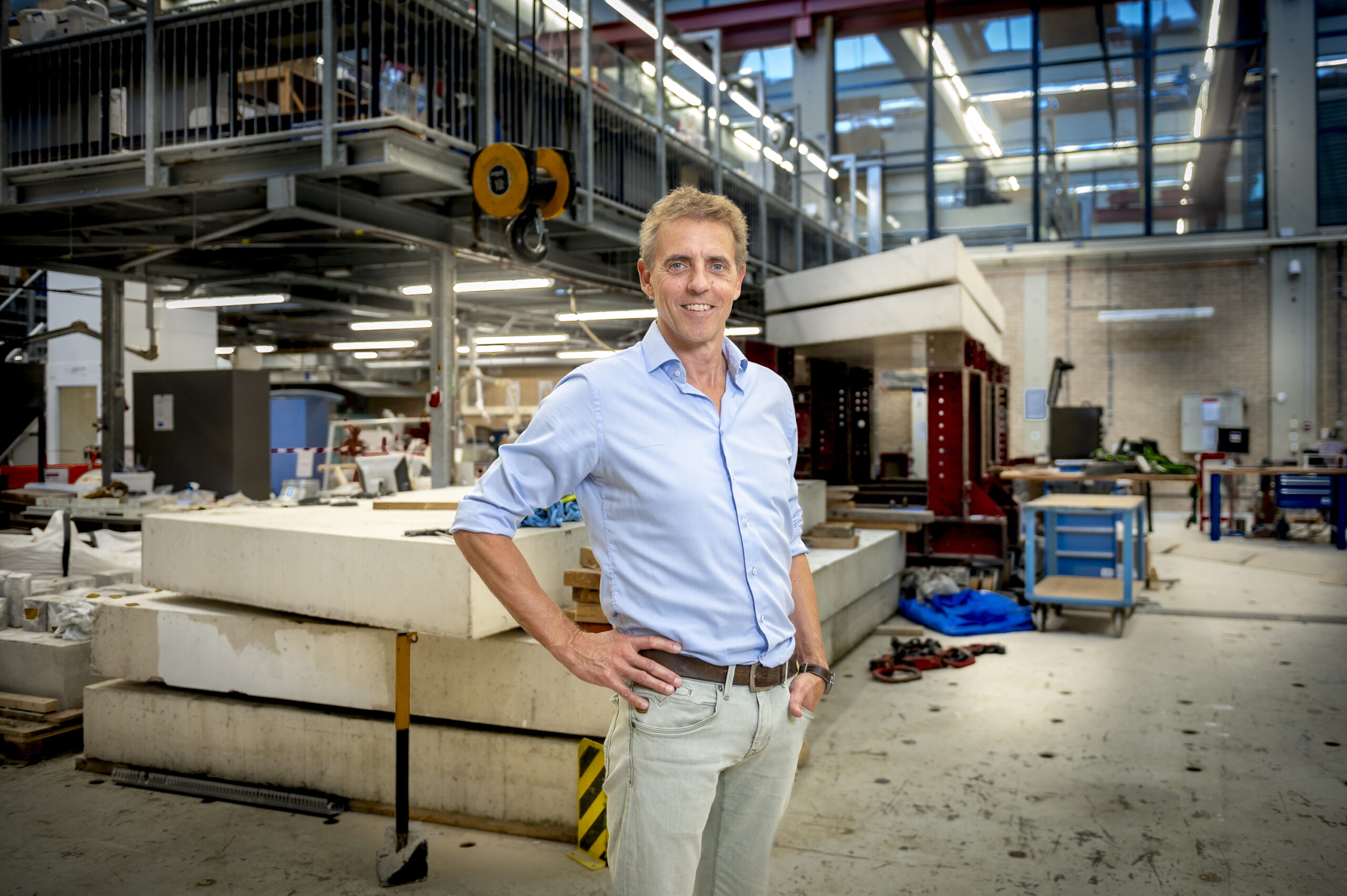
Henk Jonkers at the Concrete lab (Betonlab) of Civil Engineering and Geosciences © Erno Wientjens
Industry faces a mammoth task
As Jonkers is happy to admit, he knew very little about concrete or sustainability in the construction sector before adventure lured him to Delft. After getting to grips with both of them, he is now convinced of the need for urgency. “In Europe, the targets are as clear as they are ambitious: 55% reduction in damaging emissions by 2035 and 100% circular by 2050. That seems quite achievable for many industries. But it’s a mammoth task for construction.”
As long as concrete remains attractive as a material, there will always be a challenge in recycling and reusing it. Currently, recycling concrete offers relatively minimal environmental advantage. Some 80 to 90% of the environmental impact of concrete is in cement. Old concrete is ground into a powder and does not replace the cement in new concrete, but only the sand or gravel. Cement and concrete is still seen as waste, says Jonkers: “Only the larger particles in recycled concrete are used to replace sand or gravel. As for the cement, the biggest component of the CO2 footprint, it’s just thrown away.”
This makes the technologies developed by Delft start-up C2CA and the Amsterdam-based Rutte Group look especially promising, both of which aim to reduce the concrete footprint by means of a sophisticated material separation method. It not only makes concrete recycling completely circular, but also enables recycled concrete to compete in terms of quality with virgin concrete while also being produced on location, dramatically reducing CO2 emissions from transport.
Putting short-term thinking behind us
Jonkers is involved in several innovative Delft start-ups that are bringing renewal to the concrete industry. One of these is Green Basilisk, which is using self-healing concrete based on Jonker’s intervention as a means of repairing cracks or producing new, particularly waterproof structures. Jonkers outlines how Green Basilisk’s so-called bio-concrete can be used in several ways. “You can use self-healing concrete in construction in order to prevent problems with cracks and leaks. But you can also use bio-concrete to repair cracks in existing concrete structures.”
Academic perspective, sustainable long-term solutions
As things currently stand, we are in fact subsidising traditional linear production methods, argues Jonkers: the actual costs are not being paid by producers and consumers. “The question is: do we want to be sustainable now? For ourselves and future generations? If so, we need to move towards the circular use of raw materials. We need to reject short-term thinking that only focuses on buying as many new raw materials as possible and maximising short-term profits.”
The academic world is convinced of the need for innovation in order to reduce CO2 emissions and environmental damage caused by construction and the message is starting to reach industry, says Jonkers. “The good news is that these challenges are increasingly being prioritised in Europe. The more they feature on the agenda, the more initiatives there will be to achieve technological solutions. That will require innovation on all fronts: through C2CA’s innovation in recycling, more sustainable and energy-efficient construction using materials like those produced by Green Basilisk, and by greening up cities using Respyre’s green moss façades.”
Long-term thinking is a key feature of the research and innovations being developed at TU Delft. According to Jonkers, pursuing integrated sustainable solutions is one of Delft’s key talents. “We look for solutions and potential side-effects. Companies have a tendency to see a problem as an isolated issue that needs to be resolved immediately. Scientists have a wider, more integrated perspective: what innovations will deliver the solution required? And do we know for certain that we’re not creating a new problem elsewhere?”
Jonkers believes it is possible that one day concrete and the concrete industry will be truly sustainable. “In terms of technology, we’re nearly there. So, it’s actually more a question of: why aren’t we doing it yet? The construction sector has traditionally been extremely linear and inclined to focus on price. That’s more of a short- than a long-term approach. If we are to meet the targets for 2035 and 2050, that needs to change.”
“In terms of technology, we’re nearly there. So, it’s actually more a question of: why aren’t we doing it yet?”
Henk Jonkers
Professor of Bio-adapted and Sustainable Building Materials
Innovation needs space to breath
Regulations can play a huge role in whether new methods and materials fail or succeed. Jonkers explains how even very effective innovations can struggle to reach the market if existing regulations prevent them. He stresses the importance of low-regulation environments, such as The Green Village field lab, which has exemption from the Buildings Decree (Bouwbesluit). “That provides room to test under realistic conditions and gain valuable insights.”
Jonkers also highlights the role played by legislation. “Innovations can be made more competitive by – for example – taxing primary raw materials or increasing tax on waste. Without legislation for these currently hidden costs, these innovations will continue to appear more expensive.”
This is why Jonkers would like to see large projects introduce compulsory innovation. “Commissioning authorities of major construction projects could insist that their contractors devote a certain percentage to innovation. The results could be great: promising innovations will be applied in major, challenging infrastructure projects. We could then combine the knowledge and expertise of universities and industry and become innovative pioneers – on the construction site.”

